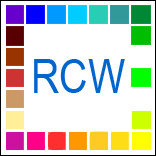D)R) "So how does the shadow color of a red tomato sitting in the morning light change or differ from the shadow color of a red tomato sitting in noon light and in the evening light since morning sunlight has one shadow color and evening sun has a different shadow color and noon sun has another shadow color."
Each set of shadow colors will mix to a neutral gray or neutral dark, they all take different paths to get there.
The morning opposition colors are yellow-to-brown, and ultramarine/royal blue. These two pigments can mix any color from the pure brown umber without any blue in it, to a 99% blue with 1% brown in it. From warm yellow to cool blue, and any where in-between.
All oppositions mix neutral dark.
http://www.realcolorwheel.com/complementsneutral.htmhttp://www.realcolorwheel.com/complementsofnature.htmA cool/side morning shadow is opposite the bright yellow morning sun.
A tomato in the shady area will use different pigment colors than a tomato in the sun which would be cad red. The opposite of red is cyan. The tomato in the sun or shade would be shadowed with cyan pigment.
When looking into a hard edged morning shadow area and seeing only cool colors, or looking at the cool shadows of the trees in the morning, We are seeing the yellow & blue, color opposition at work.
Magenta and green are the noon complement oppositions. This is when the shadows within the 1st concentric ring (10 yards) are the darkest. The shadow colors are warmer colors than in the morning. The range of Thalo green and PR122 magenta is very gradual. The range of the evening colors red&cyan is very short because cad red is very opaque. You can increase the range of red&cyan by using transparent primaries.

 Home
Home

 Help
Help

 Search
Search

 Login
Login

 Register
Register

 Broadcast Message to Admin(s)
Broadcast Message to Admin(s)

 « Home
« Home  ‹ Board
‹ Board  Top of this page
Top of this page 
 Pages: 1
Pages: 1

